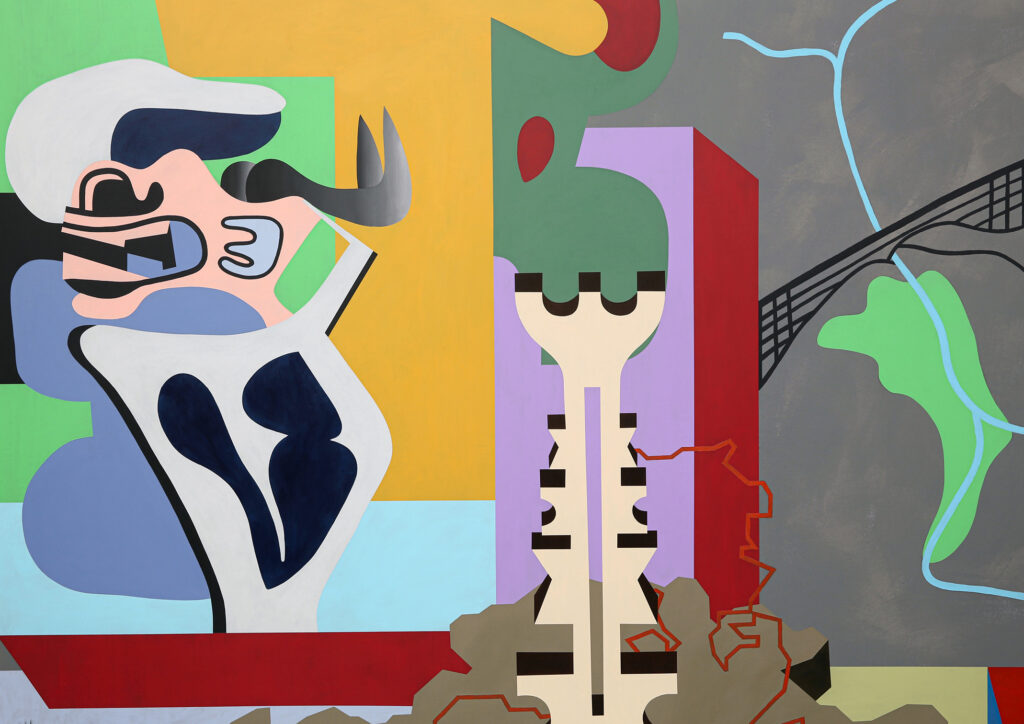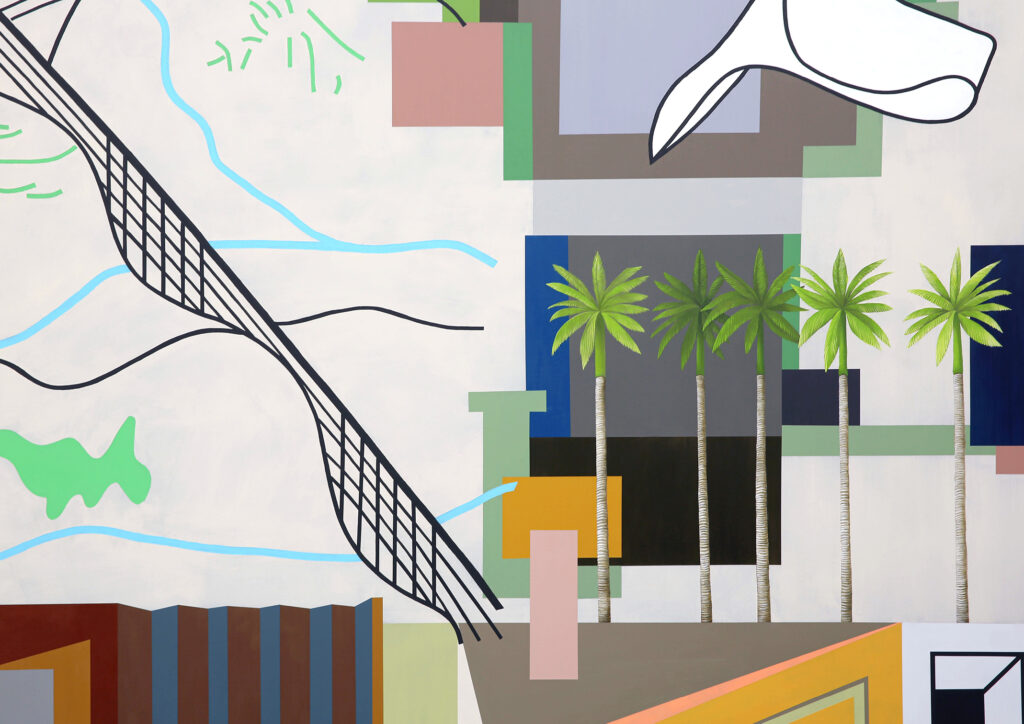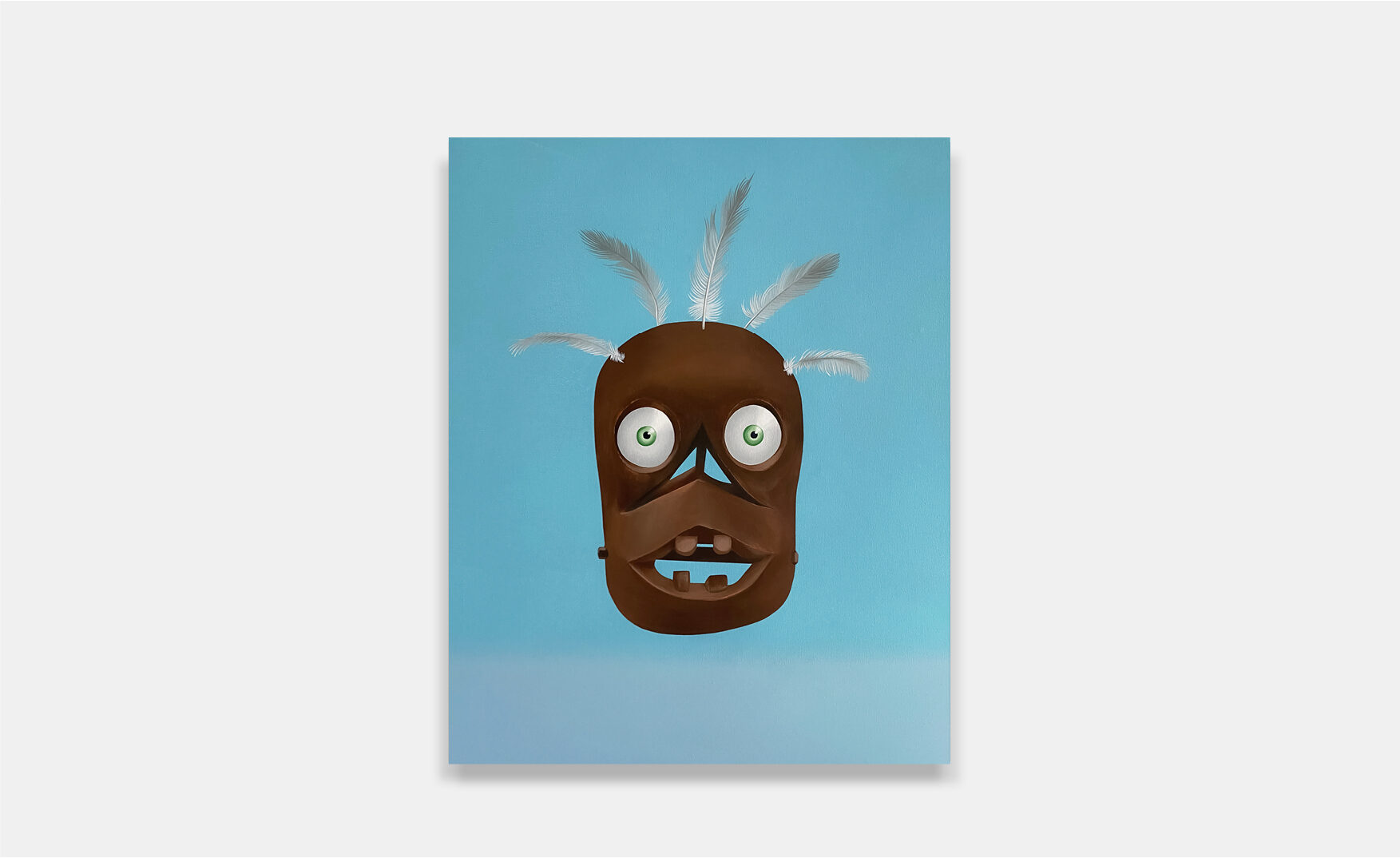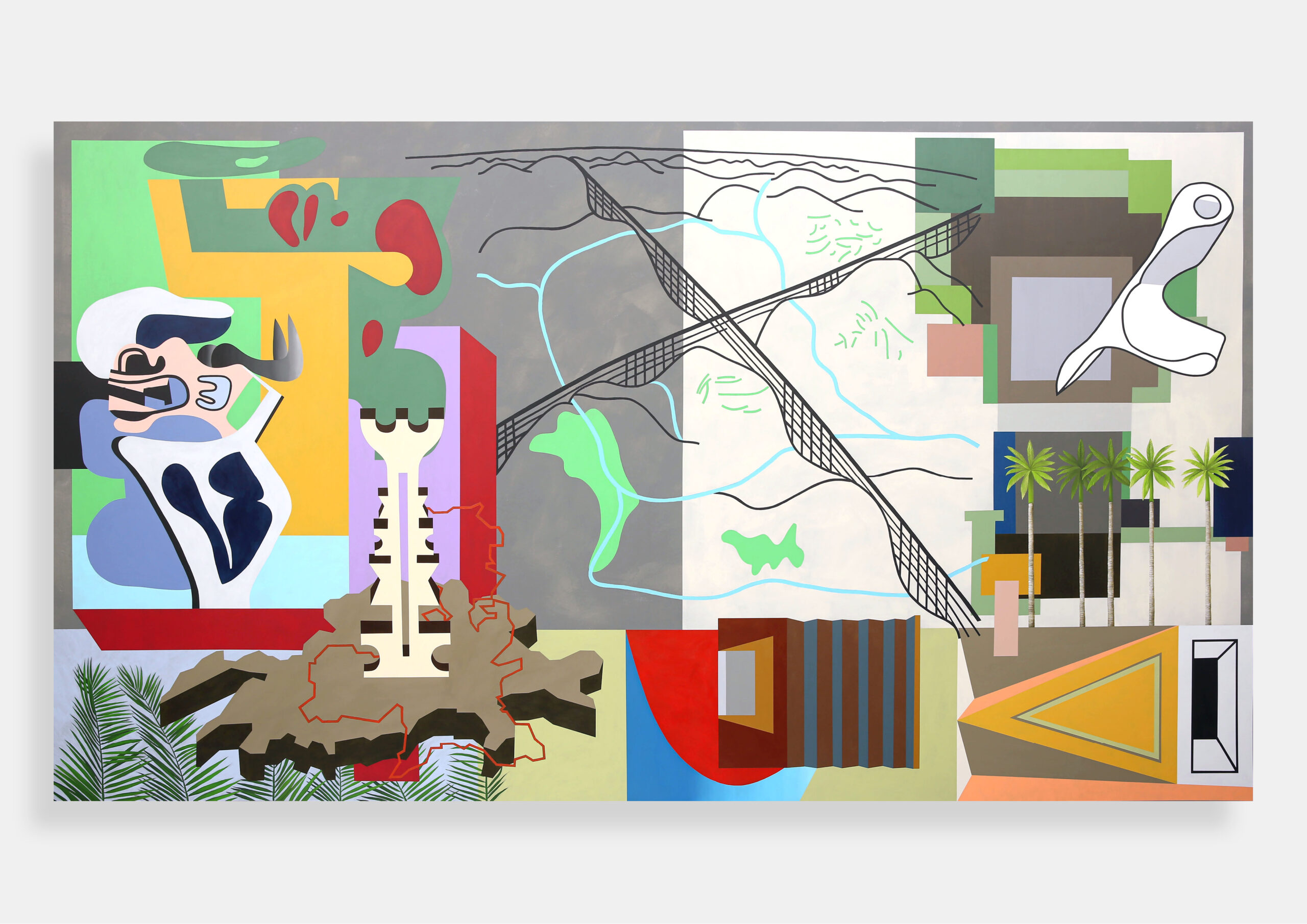Land of the future – You won’t see any country 2020 – Acrylic on canvas – 170 x 300 cm


São Paulo is portrayed in a not too distant future. Water is scarce, the heat is unbearable, garbage clogs the city and the System and its omnipotent power rules its subjects’ every movement and thoughts. That’s the plot of the book Não verás país nenhum (You will not see any country). This classic novel of dystopia published in 1981 by the Brazilian writer Loyola Brandão is the ground motif for this painting.
Despite being a work of fiction, the book is frighteningly close to today’s reality. We are now very distant from a past full of optimism and promises, and rather at a scenario of economical, social and environmental collapse. To explore ideas for the future, I start from a particular point in the past of the city of São Paulo when, even if briefly, one envisioned what the modern city and society should look like.
This painting investigates Le Corbusier’s urban hypothesis for the city of São Paulo, made during his trip to Latin America in 1929. The city planned for São Paulo by Le Corbusier is depicted in the image of an ‘X’, formed by two habitable viaducts. Its tops are aligned with the level of the highways in order to free the rivers, protect green areas from deforestation and prevent a major social integration crisis.
The central figure in the painting is Le Corbusier’s drawing for the city. You also see side by side, the central city square landscaping, current maps of São Paulo, sculptures by Brazilian artists and parts of Le Corbusier paintings that resembles São Paulo’s architecture of the 30s.
Le Corbusier’s plan could not be more different from the São Paulo that was built. The painting You will not see any country propose reviewing the choices of urban models made in the past and then to consider the values and issues of the current generation while imagining possibilities for the future.
Land of the future
The book Brazil, Land of the future, published in 1941 by the Austrian author Stefan Zweig, is a travel guide. The work describes Brazil as an idyllic place with extraordinary civilizing potential.
Despite its sales success, the book was devious as the country was currently under a dictatorship. Nevertheless, Brazil, Land of the future became a national epithet. It was as a slogan widely explored by the government at the time. The new international aesthetics would conveniently match the government’s desire to promote the country’s progress and modernization.
A characteristic of the history of Brazilian culture in the 20th century is the appropriation of Modern avant-gardes by artists and the consequent consolidation of Modernist Brazilianness as one of the foundations of national identity.
With the series Land of the future, I aim to contrast the Modern project in Brazil – its promises of the future and its relationship with politics – with the present context.

